Two types of functionally distinct fiber containing structural protein complexes are produced during infection of adenovirus serotype 5
- PMID: 25723153
- PMCID: PMC4344211
- DOI: 10.1371/journal.pone.0117976
Two types of functionally distinct fiber containing structural protein complexes are produced during infection of adenovirus serotype 5
Abstract
Adenoviruses are common pathogens. The localization of their receptors coxsackievirus and adenovirus receptor, and desmoglein-2 in cell-cell junction complexes between polarized epithelial cells represents a major challenge for adenovirus infection from the apical surface. Structural proteins including hexon, penton base and fiber are excessively produced in serotype 5 adenovirus (Ad5)-infected cells. We have characterized the composition of structural protein complexes released from Ad5 infected cells and their capacity in remodeling cell-cell junction complexes. Using T84 cells as a model for polarized epithelium, we have studied the effect of Ad5 structural protein complexes in remodeling cell-cell junctions in polarized epithelium. The initial Ad5 infection in T84 cell culture was inefficient. However, progressive distortion of cell-cell junction in association with fiber release was evident during progression of Ad5 infection. Incubation of T84 cell cultures with virion-free supernatant from Ad5 infected culture resulted in distortion of cell-cell junctions and decreased infectivity of Ad5-GFP vector. We used gel filtration chromatography to fractionate fiber containing virion-free supernatant from Ad5 infected culture supernatant. Fiber containing fractions were further characterized for their capacity to inhibit the infection of Ad5-GFP vector, their composition in adenovirus structural proteins using western blot and LC-MS/MS and their capacity in remolding cell-cell junctions. Fiber molecules in complexes containing penton base and hexon, or mainly hexon were identified. Only the fiber complexes with relatively high content of penton base, but not the fiber-hexon complexes with low penton base, were able to penetrate into T84 cells and cause distortion of cell-cell junctions. Our findings suggest that these two types of fiber complexes may play different roles in adenoviral infection.
Conflict of interest statement
Figures
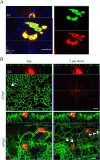
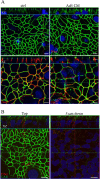


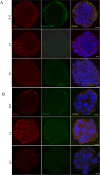
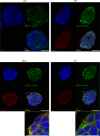
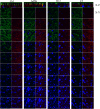
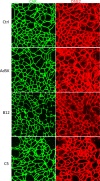
Similar articles
-
Tropism and transduction of oncolytic adenovirus 5 vectors in cancer therapy: Focus on fiber chimerism and mosaicism, hexon and pIX.Virus Res. 2018 Sep 15;257:40-51. doi: 10.1016/j.virusres.2018.08.012. Epub 2018 Aug 17. Virus Res. 2018. PMID: 30125593 Review.
-
A mosaic fiber adenovirus serotype 5 vector containing reovirus sigma 1 and adenovirus serotype 3 knob fibers increases transduction in an ovarian cancer ex vivo system via a coxsackie and adenovirus receptor-independent pathway.Clin Cancer Res. 2007 May 1;13(9):2777-83. doi: 10.1158/1078-0432.CCR-06-2706. Clin Cancer Res. 2007. PMID: 17473211 Free PMC article.
-
Penton-dodecahedral particles trigger opening of intercellular junctions and facilitate viral spread during adenovirus serotype 3 infection of epithelial cells.PLoS Pathog. 2013 Oct;9(10):e1003718. doi: 10.1371/journal.ppat.1003718. Epub 2013 Oct 31. PLoS Pathog. 2013. PMID: 24204268 Free PMC article.
-
Interaction of adenovirus type 5 fiber with the coxsackievirus and adenovirus receptor activates inflammatory response in human respiratory cells.J Virol. 2006 Nov;80(22):11241-54. doi: 10.1128/JVI.00721-06. Epub 2006 Sep 6. J Virol. 2006. PMID: 16956941 Free PMC article.
-
Adenovirus vectors composed of subgroup B adenoviruses.Curr Gene Ther. 2007 Aug;7(4):229-38. doi: 10.2174/156652307781369137. Curr Gene Ther. 2007. PMID: 17969556 Review.
Cited by
-
Oncolytic Virus-Induced Autophagy in Glioblastoma.Cancers (Basel). 2021 Jul 12;13(14):3482. doi: 10.3390/cancers13143482. Cancers (Basel). 2021. PMID: 34298694 Free PMC article. Review.
References
-
- Bergelson JM, Cunningham JA, Droguett G, Kurt-Jones EA, Krithivas A, et al. (1997) Isolation of a common receptor for Coxsackie B viruses and adenoviruses 2 and 5. Science 275: 1320–1323. - PubMed
-
- Gaggar A, Shayakhmetov DM, Lieber A (2003) CD46 is a cellular receptor for group B adenoviruses. Nat Med 9: 1408–1412. - PubMed
Publication types
MeSH terms
Substances
Grants and funding
LinkOut - more resources
Full Text Sources
Other Literature Sources
Research Materials

